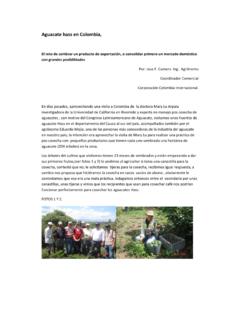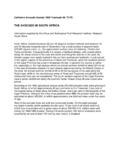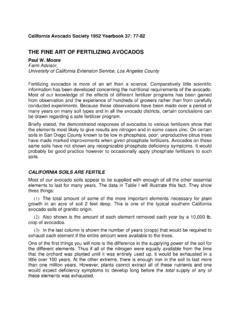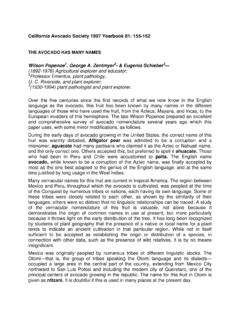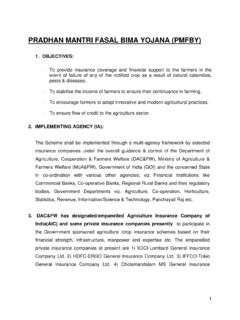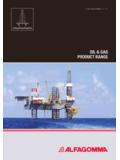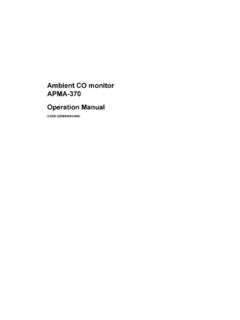Transcription of The Role of Surface Ridging and Protuberances on Avocado ...
1 Copyright NZ Avocado Growers Association Annual Research Report 2001 20 THE ROLE OF Surface Ridging AND Protuberances ON Avocado FRUIT IN THE DEVELOPMENT OF RIPE ROTS H. A. PAK1, D. BETTESWORTH2, DAWES 1) Avocado Industry Council Ltd PO Box 16004, Bethlehem, Tauranga 2) Agriquality, Private Bag 9003, Whangarei ABSTRACT Raised Surface deformities of Avocado fruit, which includes ridges and Protuberances , are prone to mechanical damage as a result of their exposed nature. This mechanical damage manifests itself as peel bruising and may contribute to rot development. The extent to which Ridging and Protuberances influences the extent of rot development in ripe fruit was investigated in two separate experiments.
2 The more exposed the ridge or protuberance in terms of height, the greater the likelihood that it will suffer damage during handling or grading and contribute to the development of ripe rots. Keywords: peel damage, Ridging , protuberance, ripe rots INTRODUCTION Ridges and Protuberances are raised deformities on the Surface of the fruit. Both are classified as major defects under the New Zealand Avocado Industry grade standards, where fruit are graded according to the height and extent of Ridging and the height and number of Protuberances . Two trials were conducted in the 2000-2001 season to examine the significance of different levels of Ridging on the development of rots in fruit in order to reassess grade standards for the 2001 season.
3 The first trial examined peel damage and development of rots in relation to the prevailing grade standards and compared this with fruit that was heavily ridged or had large Protuberances . The second trial investigated the influence of height of ridges and Protuberances on rot development. MATERIALS AND METHODS Trial 1 This trial compared ripe fruit quality of Class I and Class II product and TAG3 fruit which was either heavily ridged or had large Protuberances . Treatments were: 1) Class I product (no sharp ridges >2mm, less than 25% Surface view) 2) Class II product 3) TAG 3 heavily ridged (sharp ridges > 4mm) 4) TAG 3 large Protuberances (>5 mm) All fruit used in this trial was taken from the same packing line of fruit, after pack house staff had graded it.
4 A split grading table was in operation, so there was no double handling of either Grade II or Tag 3 product. Samples of 200 fruit were collected at random from the grading line of Class I and Class II Copyright NZ Avocado Growers Association Annual Research Report 2001 21product. Samples of 200 heavily ridged fruit and 200 fruit with large Protuberances were selected from the TAG 3 bins. Fruit were then packed and coolstored at 5-7 C for 4 weeks, removed from coolstorage and ripened at ambient temperatures. Individual fruit were assessed at a hand firmness of 85-100, based on a firmometer with a 300g weight.
5 Fruit quality was assessed using the AIC Fruit Assessment Manual (AIC, 2000). Trial 2 This trial investigated the influence of different heights of Ridging and Protuberances on fruit quality. There were 7 treatments determined by the maximum height of either Ridging or Protuberances : 1) Control- no Ridging or Protuberances 2) Ridging < 1 mm 3) Ridging 1-2 mm 4) Ridging 2-3 mm 5) Ridging 3-4 mm 6) Protuberance < 3 mm 7) Protuberance > 3 mm Individual fruit were checked for the presence and maximum height of ridges and Protuberances by running a gauge over the Surface of the fruit. Fruit in Treatments 2-5 were selected only if they did not have significant Protuberances .
6 Similarly, only fruit that was free of Ridging was selected in Treatments 6 and 7. Each treatment was replicated 10 times, with 20 fruit per replicate. Fruit were selected directly from the field bins at the packhouse from a single grower line, placed into F40 containers, which were then emptied into the bin dump and run over the grader. Fruit were then packed into trays and coolstored at 5-7 C for 4 weeks. After 2 weeks coolstorage, green fruit were assessed for the incidence of bruising on ridges and Protuberances , the number of Protuberances per fruit, the length of the longest ridge, area of fruit affected by Ridging , and proportion of Ridging with sharp edges.
7 Fruit were returned to coolstorage, and removed after a further 2 weeks and ripened at 20 C. Fruit quality was assessed after individual fruit had reached a hand firmness of 95 (based on a firmometer with a 300g weight). Fruit quality was assessed in accordance with the AIC Fruit Assessment Manual (AIC, 2000). In addition, the number of rots developing on individual fruit directly beneath either a ridge or protuberance was counted . RESULTS & DICSUSSION For Trial 1, both the incidence and severity of peel damage on TAG3 fruit with either heavy Ridging or large Protuberances was significantly greater than either Class I or Class II fruit (Table 1).
8 Class I fruit had significantly less body rots (Table 1) than the other treatments, both in terms of incidence and severity. Copyright NZ Avocado Growers Association Annual Research Report 2001 22 Table 1: Mean incidence and severity of peel damage and body rots (brown patches under skin) for each treatment in Trial 1. Incidence Severity Treatment Peel Rots Peel Rots Class I 40 a a a a Class II a 34 b a b Ridges > 4mm 82 b 39 b b b Protuberances > 5mm 74 c b c b Values within a column followed by the same letter are not significantly different (P< ).
9 In Trial 2 the larger the ridge or protuberance the more likely it was to be damaged either by bruising or abrasion. (Table 2). Damage to the exterior of the fruit appeared to be restricted to the raised deformities as there were no significant differences in the amount of peel damage between treatments. Table 2. Treatment averages from green fruit assessment of Trail 2 for incidence of bruising on ridge or protuberance (%), average length of longest ridge (mm), average Surface area of fruit affected by Ridging (%), mean number of Protuberances per fruit and severity of peel damage (% fruit area affected).
10 Treatment Incidence of Bruising on ridge/prot. Length of longest ridge Area of Ridging Number of Protub. Peel damageControl - - Ridging < 1 mm Ridging 1-2 mm Ridging 2-3 mm Ridging 3-4 mm Protuberance < 3 mm Protuberance > 3 mm With Protuberances a significant relationship was observed between the mean width of the Protuberances in each replicate and the proportion of Protuberances in that replicate, which were bruised (Figure 1). Both protuberance treatments had significantly more rots than the control. In Trial 2 there was a significant relationship (P< ) between the maximum height of Ridging and the severity of body rots (Table 3).

